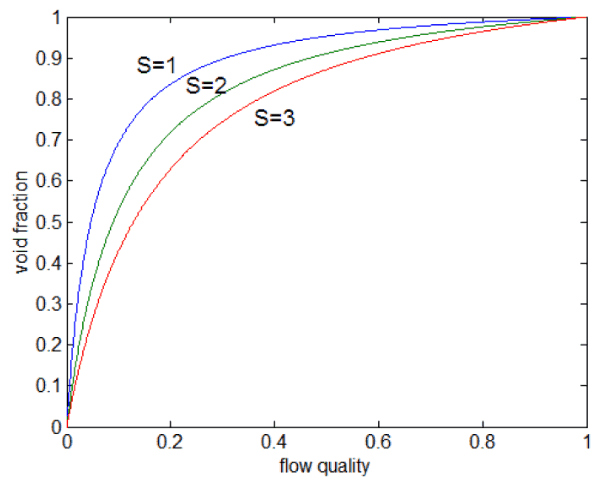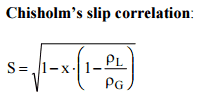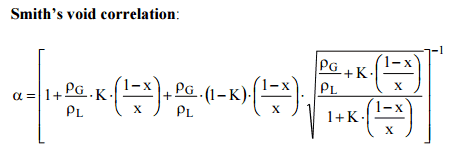Basic Parameters of Two‐phase Fluid Flow
In this section we will consider the simultaneous flow of gas (or vapor) and liquid water (as encountered in steam generators and condensers) in concurrent flow through a duct with cross-sectional area A. The subscripts “v” and “ℓ” indicate the vapor and liquid phase, respectively. Fundamental parameters that characterize this flow are:
Slip Ratio – Velocity Ratio
In two-phase fluid flow, it is convenient to use the slip ratio. The slip ratio (or velocity ratio) in a two-phase flow is defined as the ratio of the velocity of the vapor phase to the velocity of the liquid phase. The slip ratio in a two-phase fluid flow is defined as:
In the homogeneous equilibrium model (HEM) of two-phase flow, the slip ratio is by definition assumed to be unity (there is no slip). However, most industrial two-phase flows have different velocity of the gas and liquid phases, these can differ significantly. The models that account for the existence of the slip are called separated flow models.

The reason for defining the void fraction and the slip ratio is that they also make it possible to calculate the pressure drop of the two-phase flow. Several correlations for calculation the slip ratio, S, and the void fraction are presented in literature. The following correlations are given in order of increasing accuracy.





